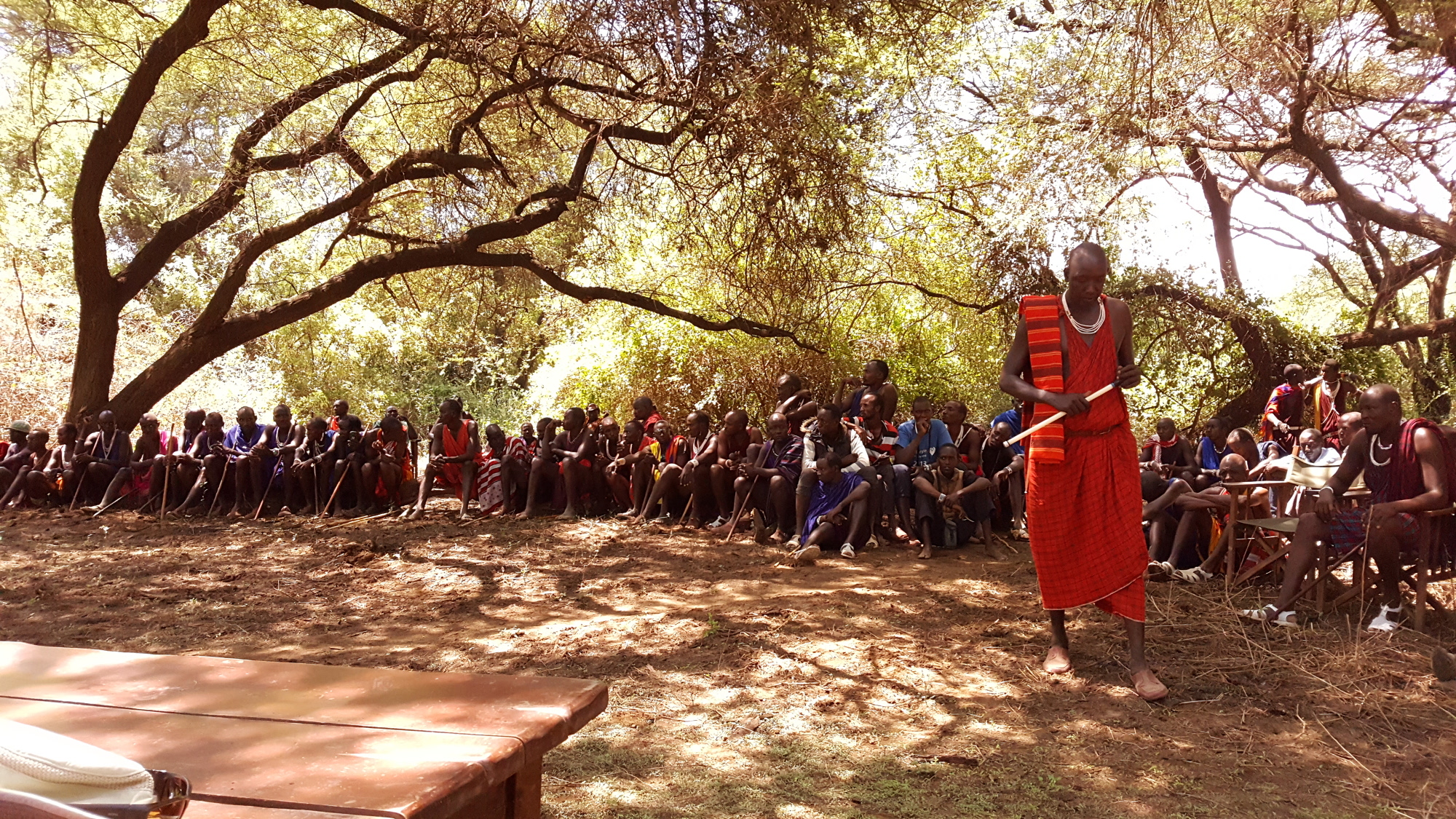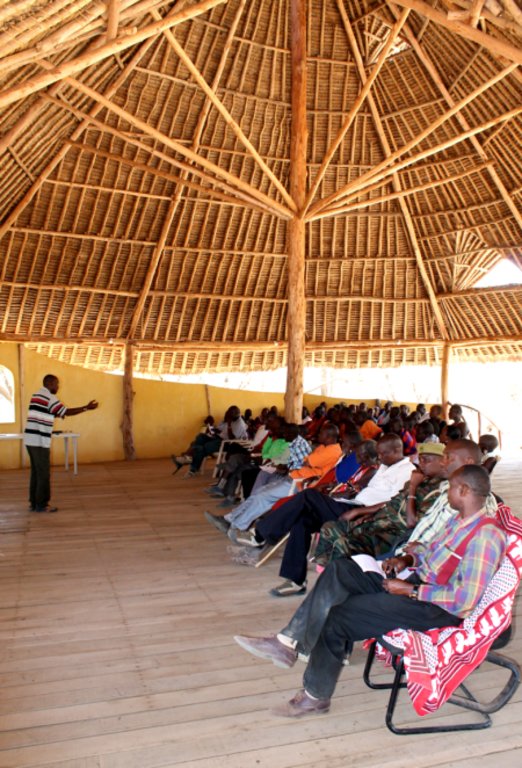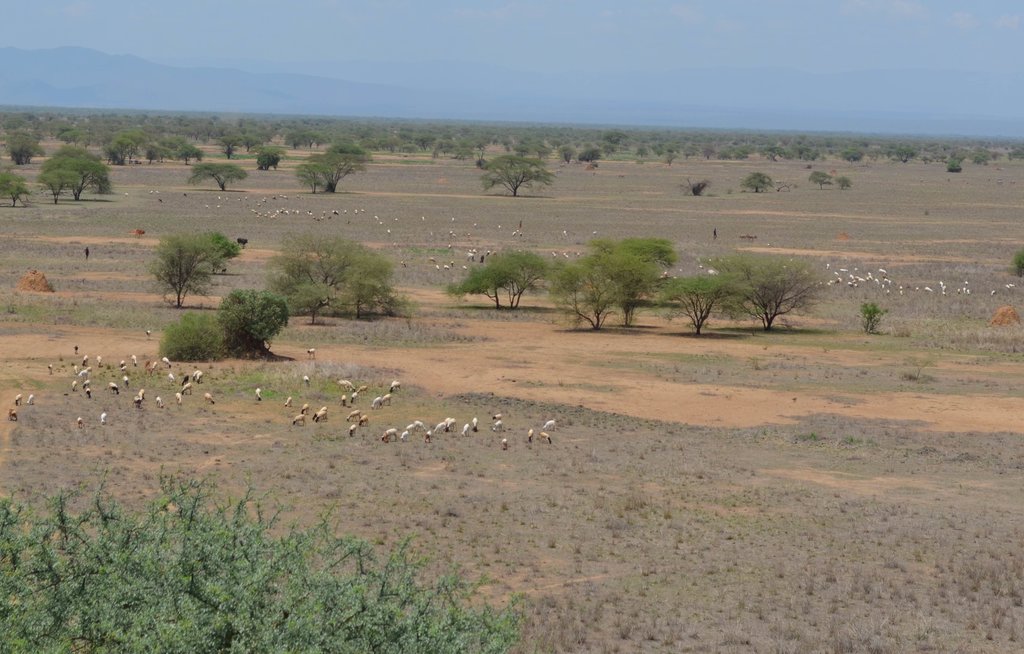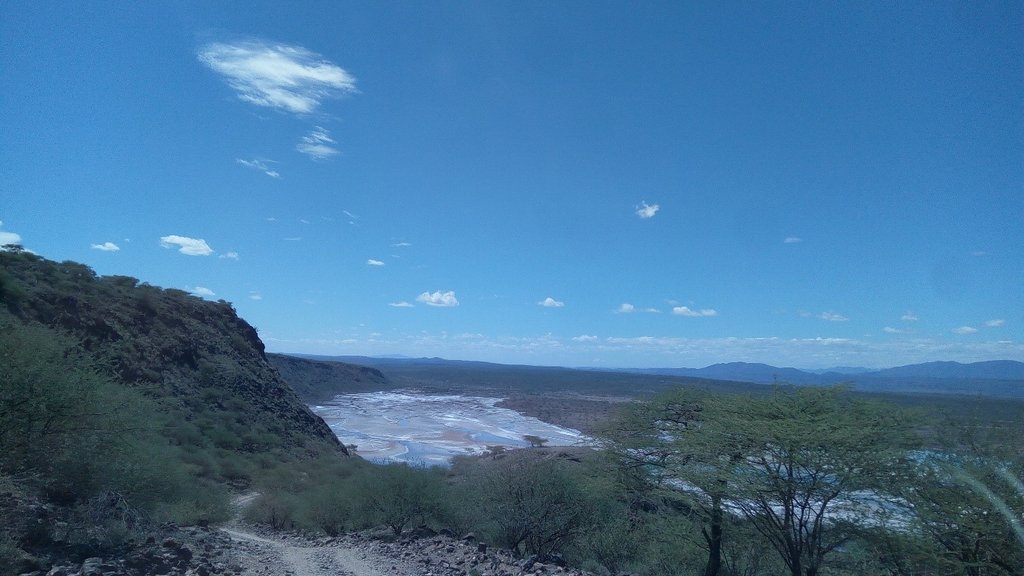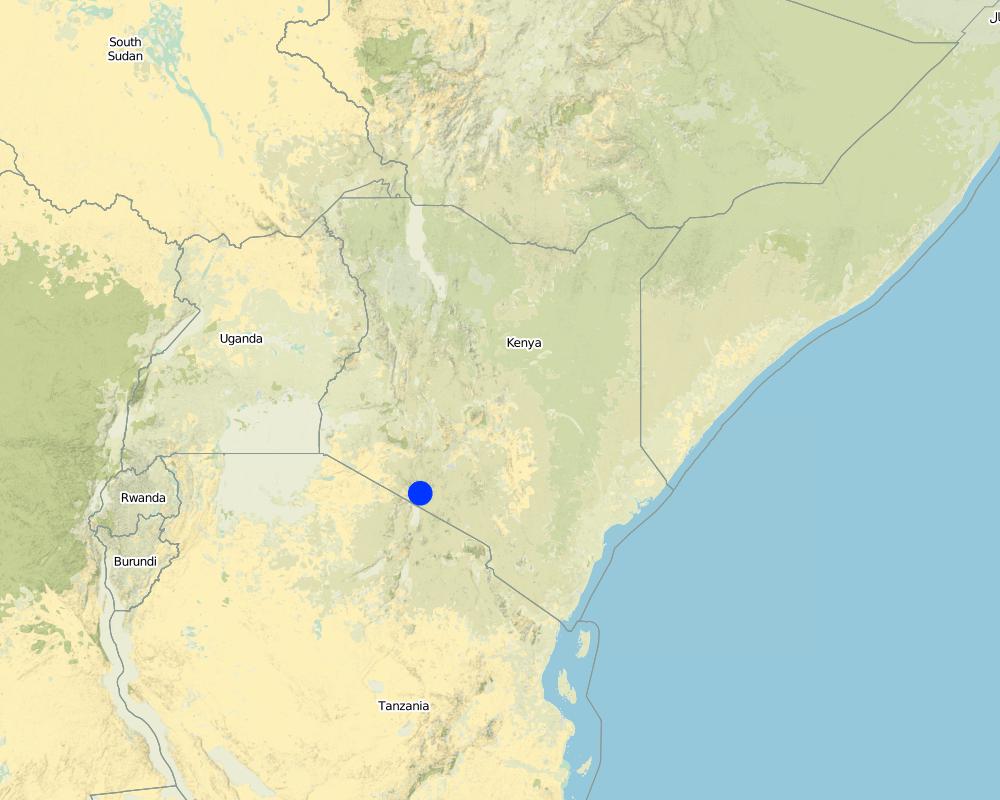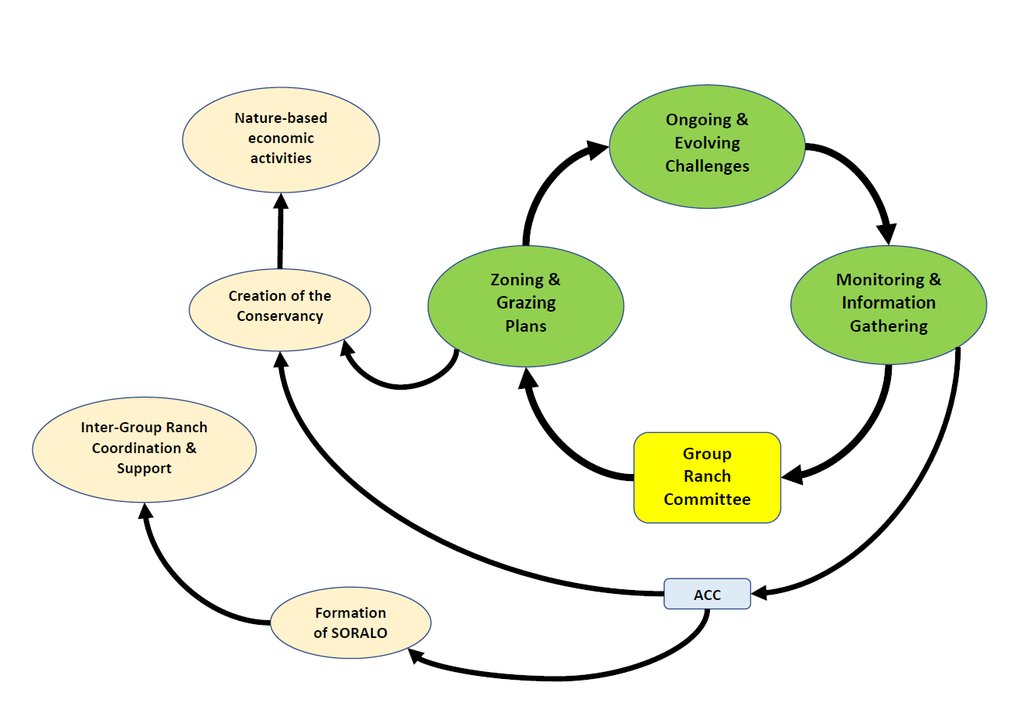Community-based rangeland management in the southern Kenyan rangelands [Кения]
- Создание:
- Обновить:
- Составитель: Lance W. Robinson
- Редакторы: Enoch Mobisa, Peter Tyrrell
- Рецензенты: Alexandra Gavilano, Rima Mekdaschi Studer, Hanspeter Liniger, Donia Mühlematter, Simone Verzandvoort
approaches_3321 - Кения
- Полная аннотация в формате PDF
- Полная аннотация в формате PDF для вывода на печать
- Полная аннотация в формате интернет-страницы
- Полная аннотация (неотформатированно)
- Community-based rangeland management in the southern Kenyan rangelands: 13 марта 2018 г. (inactive)
- Community-based rangeland management in the southern Kenyan rangelands: 20 апреля 2018 г. (inactive)
- Community-based rangeland management in the southern Kenyan rangelands: 22 июня 2018 г. (inactive)
- Community-based rangeland management in the southern Kenyan rangelands: 2 ноября 2021 г. (public)
Просмотреть разделы
Развернуть все Свернуть все1. Общая информация
1.2 Контактные данные специалистов и организаций, участвующих в описании и оценке Подхода
Название проекта, содействовавшего документированию/оценке Подхода (если применимо)
Restoration of degraded land for food security and poverty reduction in East Africa and the Sahel: taking successes in land restoration to scale (ILRI)Название организации (-ий), содействовавших документированию/оценке Подхода (если применимо)
ILRI International Livestock Research Institute (ILRI) - Кения1.3 Условия, регламентирующие использование собранных ВОКАТ данных
Когда были собраны данные (на местах)?
01/10/2017
Составитель и ответственный/-ые специалист(-ы) согласны с условиями, регламентирующими использование собранных ВОКАТ данных:
Да
1.4 Ссылка (-и) на Анкету (-ы) по Технологиям УЗП

Ecosystem-wide seasonal grazing management in community land [Кения]
Livestock movements are managed through community governance systems to maintain spatial and temporal heterogeneity of pasture, creating a gradient of quality and quantity of pasture across the landscape. This is achieved through clearly designated seasonal grazing areas for livestock and tight controls on settlement areas, grazing patterns and water points. …
- Составитель: Peter Tyrrell
2. Описание Подхода УЗП
2.1 Краткое описание Подхода
Olkiramatian Group Ranch strengthened the capacity of its community governance structures and began to engage in more rigorous implementation of seasonal grazing plans. This was based on traditional ecological knowledge and rangeland management practices. The group ranch incorporated conservation, research, and joint rangeland management planning with neighboring communities.
2.2 Подробное описание Подхода
Подробное описание Подхода:
Prior to implementation of the approach described here, rangeland management was carried out through customary institutions supported by a group ranch committee. However, many challenges hindered effective management of livestock and natural resources. These included:
• Poor financial management
• Lack of accountability from the leaders - and lack of demand for accountability from the members
• Conflicting group and individual interests
• Lack of a written constitution and grazing by-laws to reinforce traditional decision making.
To minimize and overcome some of these weaknesses, the African Conservation Centre (ACC), a conservation NGO and Southern Rift Association of Land Owners (SORALO), a Maasai land trust, worked with Olkiramatian and other communities to help them strengthen their planning and governance and to reinvigorate the traditional system of grazing management. Initially, ACC worked with the community’s governance and resource management committees to build local capacity for decision-making and resource management. Institutions previously responsible for resource management, which had existed under traditional systems, had begun to weaken from both internal and external pressures, undermining the long-term sustainability and equity of rangeland management. The group ranch emerged as the key modern institution within this community and needed to be strengthened to support traditional management. To do this several sequential steps were taken:
(i) First, the group ranch committee instituted a more objective way of identifying and electing office holders, to ensure a credible base for resource governance and building consensus among resource users;
(ii) Registration of group ranch members was re-initiated to ensure equal access and rights to resource use, and to provide clarity around membership;
(iii) Institutions responsible for rangeland management, including the group ranch committee, and the conservation and grazing subcommittees, were reinforced primarily through the strengthening of internal capacity;
(iv) ACC facilitated a process for consolidating the group ranch's governance and by-laws to help guide the implementation of the strategy, including enforcement;
(v) The group ranch implemented provisions for holding leaders accountable, allowing the group ranch members to demand their rights;
(vi) Decision-making processes were facilitated by laying down procedures for sharing information and apportioning responsibilities among the leadership - as decided at annual general meetings;
(vii) Rangeland monitoring groups and rangers, mostly local youth, were trained and positioned;
(viii) Finally, the Lale’enok Resource Centre was established, together with community enterprises based on the use of natural resources. A women’s group was included.
An important catalyst in the approach was the establishment of a community conservation area and lodge within the group ranch for the development of wildlife tourism. The conservation area capitalized on the existence of the community’s dry season reserve where wildlife such as zebra and giraffes were abundant , which is only grazed by livestock after pasture is utilized elsewhere. This creation of a conservation area, coupled with the desire to generate revenue through tourism with its semi-exclusive access rights to parts of the conservation area, worked to reaffirm the traditional grazing management strategies by preventing settlement within the conservation area and encouraging longer resting of pasture following rain. This happened alongside the development of a research program , which has helped to put community rangeland management on an evidence-based foundation.
With guidance, the community revised its grazing plan and zoned its land into four resource use areas, now embodied in the new group ranch constitution:
- Conservation or wildlife areas (which then allowed the creation of the conservancy);
- Agricultural/crop production areas;
- Livestock grazing areas (dry season and wet grazing areas);
- Human settlements.
The grazing sub-committee of the group ranch makes and implements decisions on livestock access to certain areas, with pasture rested between and across seasons. The conservancy is rested from livestock grazing as a “grass bank” during the wet seasons, which can last up to 6 months . Settlement areas are also tightly managed under this approach to preserve pasture heterogeneity and prevent local degradation. Fines are imposed on herders who break grazing regulations. On a rolling basis the communities now utilize traditional ecological knowledge, ecological monitoring and expert knowledge, to reassess these grazing regimes under changing conditions. These rangeland management activities are also nested within joint, inter-community planning such as regular meetings of the grazing committees of clusters of group ranches.
2.3 Фотографии, иллюстрирующие Подход
2.5 Страна/ регион/ место, где применялся Подход
Страна:
Кения
Административная единица (Район/Область):
Kajiado
Более точная привязка места:
Kajiado West Constituency
Map
×2.6 Даты начала и окончания реализации Подхода
Год начала реализации:
2004
Комментарии:
The approach is on-going.
2.7 Тип Подхода
- Hybrid traditional/project-based
2.8 Каковы цели/ задачи Подхода
To enhance sustainable livelihoods for pastoralist community members through informed, sustainable use of their resources in an equitable manner.
2.9 Условия содействующие применению Технологии/ Технологий в рамках Подхода или затрудняющие его
Социальные/ культурные/ религиозные нормы и ценности
- содействуют
Uniform ethnicity. Communal land tenure. The pre-existing customary institutions and the group ranch committees. The government decree on the establishment of group ranches. The strong traditional and cultural knowledge about rangeland and livestock management.
- затрудняют
Cultural beliefs: large numbers of livestock are seen as a status symbol; resulting in potential overstocking of livestock.
Наличие/ доступность финансовых ресурсов и услуг
- затрудняют
Financial resources are limited for the group ranch committee; they depend on small collections at local markets and some donor financing to enact projects.
Институциональные условия
- содействуют
The group ranch was already established and practicing planned grazing according to customary rules.
Нормативно-правовая база (землевладение, права на земле- и водопользование)
- содействуют
There is a strong body of legislation developing in Kenya to ensure sustainable use of rangeland resources. This includes the new Community Land Act (2016), which creates local governance institutions with protection of grazing; the Wildlife Act (2012), creating community conservation areas and allowing benefits and compensation from wildlife; the Water Act (2016) and the Water Resource Users Association encourage multi-user analysis and cooperation to protect the quantity and quality of water for all users within a catchment.
Управление земельными ресурсами (принятие решений, осуществление и контроль за выполнением)
- содействуют
The group ranch committee is the highest decision-making body. There is a grazing sub-committee which manages the details of seasonal grazing patterns.
Осведомленность в области УЗП, доступность технической поддержки
- содействуют
The community is networked to researchers and technical experts from institutions including ACC, SORALO, Universities and TATA chemicals; through the Lale'enok Resource Centre. Mobile phones and access to internet has enhanced access to technical information. There is a wealth of traditional knowledge within the older generation who understand the requirements for sustainable management of the landscape.
- затрудняют
Low capacity of the many community members to tap into the existing knowledge bases. Lack of technical capacity to address specific research needs identified by the community.
Рынки (для приобретения материалов и услуг, продажи продукции) и цены
- содействуют
Livestock markets within reach of the community members - the Shompole crossborder livestock market is in the neighboring conservancy.
- затрудняют
Low livestock prices at the grassroots present a challenge to the growth of the livestock value chain. A solution may be the facilitation of more direct market linkages.
Объем работ, доступность рабочей силы
- содействуют
The community members are involved in the process as part of their lifestyle. Planned grazing made it easier for them to take of their livestock and reduce the number of people required to herd their livestock.
3. Участие и распределение ролей заинтересованных сторон
3.1 Заинтересованные стороны, участвующие в реализации Подхода и их роли
- местные землепользователи/ местные сообщества
Members and executives of the group ranch committee.
Individual members of the group ranch, as rangeland users and through their grazing patterns according to the ranch's grazing plans, contribute to management.
- организации местных сообществ
Olkiramatian Group Ranch.
The group ranch, through its democratic structures, has the ultimate responsibility for decision-making for the group ranch, including rangeland management and grazing planning, partnerships, fund raising and financial management, etc.
- эксперты по УЗП/ сельскому хозяйству
Personnel of SORALO and ACC.
Provision of technical advice and support.
- ученые-исследователи
Students.
Students, both Kenyan and international, hosted by SORALO and ACC, carry out research on conservation, ecotourism, land use, rangeland condition, etc.
- общественные организации
SORALO and ACC.
Research guidance, and connection with other government, NGO and donor agency stakeholders. Also provision of technical advice and support (see SLM Specialists/Agricultural Advisers, above).
Если участвовало несколько заинтересованных сторон, назовите ведущую организацию:
Olkiramatian Group Ranch
3.2 Участие местных землепользователей/ местных сообществ на разных стадиях реализации Подхода
| Участие местных землепользователей/ местных сообществ | Перечислите участников и опишите их вовлеченность | |
|---|---|---|
| инициирование/ мотивация | самоорганизация | The community invited ACC to come and support conservation work and improve ecotourism. A visiting researcher from ACC identified opportunities for reinvigorating the group ranch structure and nature-based enterprises. The work of the researcher contributed to the approach, but the ultimate push came from the community. |
| планирование | самоорганизация | The community evolved into an organized group and was determined to employ good resource practices to improve the rangelands and the lives of the people. They sought the help of ACC in strengthening their capacity to fundraise and improve community enterprises. SORALO was established to continue supporting the community in networking and supporting the conservation work. |
| выполнение | интерактивное | The committee members, the individual members implement the approach. SORALO and to a less extent ACC, play advisory roles. The community members provide labour and time as their in-kind contribution. ACC help the community raise funds for the implementation. |
| мониторинг/ оценка | интерактивное | With guidance from SORALO, monitoring is done by community members. The various committees have a monitoring component in their work. |
| Research | интерактивное | At the beginning, research was done by a scientist from ACC. Later on in the approach, the community youth have been trained and are actively involved in research activities. |
3.3 Схема реализации (если имеется)
Описание:
Adaptation to evolving challenges through the community's governance structure -- the group ranch committee -- is at the centre of the approach.
Автор:
Enoch Ontiri and Lance Robinson
3.4 Принятие решений по выбору Технологии/ Технологий УЗП
Укажите, кто принимал решение по выбору применяемой Технологии/ Технологий:
- в основном землепользователи при поддержке специалистов по УЗП
Поясните:
The group ranch members are the collective owners and, through the Group Ranch Committee, managers of the land. They receive support and guidance from organizations such as the African Conservation Centre (ACC) and Southern Rift Association of Land Owners (SORALO) on techniques and practices to apply, but are themselves the primary decision-makers.
- Research and evidence-based decision-making played some role, but planning of technical practices to be implemented was primarily based on traditional knowledge
4. Техническая поддержка, повышение компетенций и управление знаниями
4.1 Повышение компетенций/ обучение
Проводилось ли обучение землепользователей/ других заинтересованных лиц?
Да
Укажите, кто проходил обучение:
- землепользователи
Если существенно, укажите гендерный и возрастной состав, статус, этническую принадлежность и т.д.
Training was carried out primarily for group ranch committee members and other community leaders/elders, predominantly males. Training has also been done for the RETO Women's Group.
Тип обучения:
- Training workshops
Рассматриваемые темы:
The training to the women’s group was on improved bead-making and business management in order to exploit the tourism market.
Selected youth were trained as wildlife rangers and others as rangeland monitors. Species-specific teams were trained in tracking particular species such as lions.
4.2 Консультационные услуги
Есть ли у землепользователей возможность получать консультации?
Да
Укажите, где именно оказываются консультационные услуги:
- на полях землепользователей
- в постоянно функционирующих центрах
Описание/ комментарий:
Advisory services provided by SORALO and ACC. A permanent resource centre, Lale'enok is present in the region.
4.3 Институциональная (организационная) поддержка
В ходе реализации Подхода были ли организованы новые институциональные структуры или поддержаны уже существующие?
- да, умеренно
Укажите уровень, на котором структуры были укреплены или вновь созданы:
- местные
Опишите организацию, функции и ответственность, членство и т.д.
The organizations African Conservation Centre (ACC) and Southern Rift Association of Land Owners (SORALO) have helped to strengthen the group ranch structures
Укажите тип поддержки:
- финансовая
- повышение компетенций/ обучение
Подробнее:
Primarily support has been through capacity building and training with the group ranch committee and other committees.
Additional support has been provided by SORALO through the provision of staff and labor for hosting community meetings; writing the constitution; producing maps and other information; conducting research into pertinent management issues.
ACC with funding from various sources helped to finance establishment of the conservation area and a lodge. The lodge pays a lease fee to the group ranch. Guests at the lodge pay a bed night fee which is paid to the group ranch committee and a conservation fee which goes to the conservation committee. The conservation fee pays for scouts and also finances conservation-related development such as fences, water pipelines, and other community projects.
4.4 Мониторинг и оценка
Являются ли мониторинг и оценка частью Подхода?
Да
Комментарии:
The community, especially youth, are involved in assessing the ecological status of the rangeland. There are ecological monitoring units which take censuses of flora and fauna. Community activity reports are written regularly. The major economic activity of livestock trade is monitored by a data collection team that visits the major livestock markets.
Если да, будет ли данный документ использоваться для мониторинга и оценки?
Да
4.5 Научные исследования
Были ли научные исследования частью Подхода?
Да
Укажите темы исследований:
- экология
Напишите подробнее и назовите тех, кто выполнял исследования:
Research questions are often answered by visiting students and local scientists at the Lale'enok Resource Centre. These questions cover a diverse range of issues related to the socioeconomic and ecological factors affecting local livelihoods.
African Conservation Centre. Southern Rift Association of Land Owners. Graduate students hosted by these organizations.
5. Финансирование и внешняя материальная поддержка
5.1 Годовой бюджет мероприятий по УЗП в рамках Подхода
Если точный годовой бюжет неизвестен, укажите примерный диапазон затрат:
- < 2000
Комментарий (например, основные источники финансирования/ ключевые доноры):
The primary resource used for implementation of the approach is the time of community members. Inputs from supporting organizations ACC and SORALO, while relevant, have been secondary to the approach and hence are not included in the budget here.
5.2 Финансирование и внешняя материальная поддержка, предоставляемая землепользователям
Предоставлялась ли землепользователям финансовая/ материальная поддержка для применения Технологии /Технологий?
Нет
5.3 Субсидии на отдельные затраты (включая оплату труда)
- нет
Если труд землепользователя был существенным вкладом, укажите, был ли этот вклад:
- добровольный
Комментарии:
Implementing the approach is just a lifestyle for the community members.
5.4 Кредитование
Предоставлялись ли в рамках Подхода кредиты на мероприятия УЗП?
Нет
5.5 Другие методы или инструменты стимулирования
Использовались ли другие методы или инструменты стимулирования для продвижения Технологий УЗП?
Да
Если да, поясните:
Ecotourism revenue provides some incentive to carry out and continue with rangeland management activities.
6. Анализ влияния и заключительные положения
6.1 Влияние Подхода
Сумел ли Подход расширить возможности местных землепользователей, повысить участие заинтересованных сторон?
- Нет
- Да, немного
- Да, умеренно
- Да, существенно
Сумел ли Подход дать возможность принимать решения на основе подтвержденных фактов?
- Нет
- Да, немного
- Да, умеренно
- Да, существенно
Ecological monitoring and research are prominent aspects of the interventions and community-decision-making.
Сумел ли Подход помочь землепользователям внедрить и поддерживать технологии УЗП?
- Нет
- Да, немного
- Да, умеренно
- Да, существенно
It facilitated the implementation of seasonal planned grazing.
Сумел ли Подход улучшить согласованность действий и повысить рентабельность применения практик УЗП:
- Нет
- Да, немного
- Да, умеренно
- Да, существенно
Coordination with neighbouring group ranches has been a key aspect of the interventions.
Сумел ли Подход расширить знания и возможности землепользователей в применении практик УЗП?
- Нет
- Да, немного
- Да, умеренно
- Да, существенно
Improved knowledge of rangeland and wildlife ecology.
Сумел ли Подход снизить остроту конфликтов?
- Нет
- Да, немного
- Да, умеренно
- Да, существенно
Involvement of customary institutions has contributed to mitigation and resolution of conflicts.
Сумел ли Подход разрешить правовые проблемы землевладения/ землепользования, препятствующие использованию технологий УЗП?
- Нет
- Да, немного
- Да, умеренно
- Да, существенно
In theory, tenure rights were already secure. However the weakness of the community institution--the group ranch--could have resulted in land fragmentation or alienation as it had done so in many other group ranches. Strengthening the group ranch's governance has strengthened tenure security.
6.2 Основные причины, побуждающие землепользователей внедрять УЗП
- рост продуктивности
The rangelands have increased pastures for livestock. Wildlife numbers in the rangeland increased. Ecotourism enterprises improved in the area.
- рост прибыли (доходности) и рентабельности
- снижение деградации земель
Splash erosion was reduced. Some areas that were bare started having regeneration of grass.
- нормативно-правовое регулирование (штрафы)/ контроль
The rules and by-laws were revised and strategies for enforcement were improved. The group ranch, conservation and rangeland monitoring committees were strengthened.
- экологическая сознательность
Community members are more aware of the role of wildlife and ecosystem on their lives. New women groups, the youth and other community members involved in research projects has improved their awareness.
- приобретение знаний и опыта в области УЗП
The community is constantly involved in project work. Skills in ecological monitoring, ecotourism enterprises, rangeland monitoring, lion tracking all help the community members acquire skills.
- снижение остроты конфликтов
The program has enhanced cohesion and more integration of community members. The committees are an avenue for mitigating any disputes and resolving conflict in the community.
6.3 Долгосрочная устойчивость мероприятий в рамках Подхода
Могут ли землепользователи самостоятельно (без внешней поддержки) продолжать применение того, что было реализовано в рамках Подхода?
- да
Если да, опишите как:
The approach is based on ensuring strong, community-led governance. This has been achieved and is likely to be sustained.
6.4 Сильные стороны/ преимущества Подхода
| Сильные стороны/ преимущества/ возможности по мнению землепользователей |
|---|
| The approaches emanates from a strong community with a working customary rangeland management structure. Communal ownership of land and the community's sense of belonging and customary (tribal) right of access and use of natural resources all make it easier for the approach to be successful. |
| Сильные стороны/ преимущества/ возможности по мнению составителя или других ключевых специалистов |
|---|
| The approach is a bottom-up one that builds on traditional resource management practices, adapting them to evolving social, economic and biophysical conditions. This contributes to strong sense of community ownership. |
| As a community driven and implemented the approach, the cost is minimal. With the incorporation of the conservation/wildlife tourism component, a secondary source of income for the community structures and some individuals in the community is realized. |
| The climatic conditions that allow extensive livestock production and wildlife is also another advantage for the approach. The landscape lies between Nguruman escarpment on one side, Lake Magadi on the northwestern part and the Amboseli/Mt. Kilimanjaro on the southern part. These contribute to some degree of isolation and protection of influxes of herders from other locations. |
| The demonstrated success of the grazing management practices put in place has led to changed decisions and management practices reinforcing the community's willingness to continue with the system. |
6.5 Слабые стороны/ недостатки Подхода и пути их преодоления
| Слабые стороны/ недостатки/ риски по мнению землепользователей | Возможные пути их преодоления/снижения? |
|---|---|
| There is concern among some community members about the incorporation of conservation activities potentially leading to restrictions on mobility and access to pastures. | Continued awareness raising about the benefits and pre-empting misunderstandings about the conservation activities. |
| The community success in rangeland management is sometimes viewed as a source of failure. This is because the community holds some customary beliefs and norms that allow for practices like reciprocal grazing by other pastoralists on their land. In the case that Olkiramatian is the best quality grass bank during extended droughts, livestock from other communities flock there and mostly cause overgrazing, degradation, and social conflict. | The idea of SORALO networking all the landowners in the southern rangelands and are helping them establish similar approaches means the whole rangeland in southern Kenya will become a continuous, homogenously managed landscape. |
| Слабые стороны/ недостатки/ риски по мнению составителя или ответственных специалистов | Возможные пути их преодоления/снижения? |
|---|---|
| The capacity of the group ranch committee to raise and attract appropriate human and financial resources is low. | Continued training on effective governance and help in putting in place working systems. |
| The stocking rates of livestock per household are not corresponding to the holding capacity of the rangeland. | Continued action research and training of the locals on the need to reduce livestock numbers. |
7. Справочные материалы и ссылки
7.1 Методы сбора/источники информации
- опросы землепользователей
12 focus group discussions.
- опросы специалистов/экспертов по УЗП
9 key informant interviews.
- данные, собранные из отчетов и достоверных документов
peer reviewed journal papers. project reports.
7.2 Ссылки на опубликованные материалы
Название, автор, год публикации, ISBN:
Community-based Rangeland Management in Shompole and Olkiramatian Group Ranches. Ontiri, Enoch M. and Lance W. Robinson. 2018.
Где опубликовано? Стоимость?
cgspace.cgiar.org -- open access
7.3 Ссылки на материалы, доступные онлайн
Название/ описание:
Seasonal movements of wildlife and livestock in a heterogenous pastoral landscape: Implications for coexistence and community based conservation
Адрес в сети Интернет:
https://www.sciencedirect.com/science/article/pii/S2351989417301075
Название/ описание:
Lale'enok Resource centre
Адрес в сети Интернет:
https://laleenok.wordpress.com/history/
Ссылки и модули
Развернуть все Свернуть всеСсылки

Ecosystem-wide seasonal grazing management in community land [Кения]
Livestock movements are managed through community governance systems to maintain spatial and temporal heterogeneity of pasture, creating a gradient of quality and quantity of pasture across the landscape. This is achieved through clearly designated seasonal grazing areas for livestock and tight controls on settlement areas, grazing patterns and water points. …
- Составитель: Peter Tyrrell
Модули
Нет модулей


